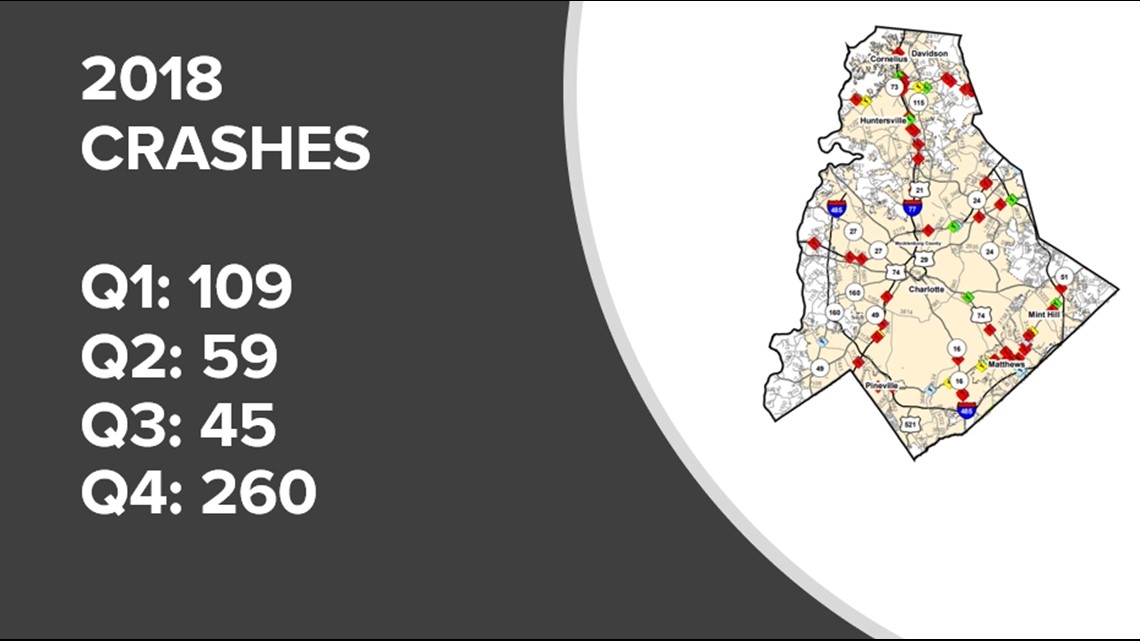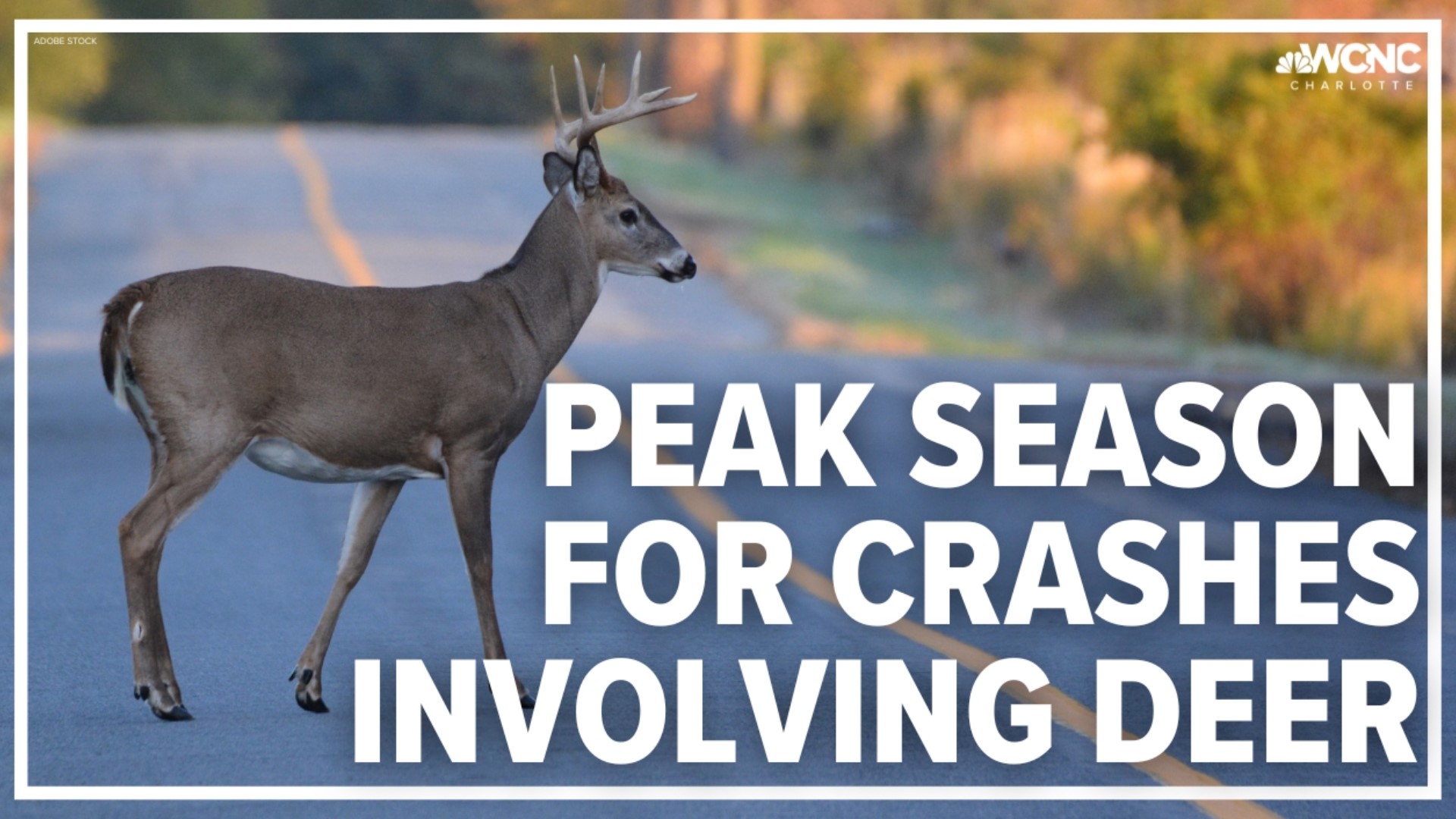CHARLOTTE, N.C. — It’s the peak season for car crashes involving deer in North Carolina as the number of these types of crashes typically doubles in October, November, and December.
In 2021, there were nearly 21,000 animal-related crashes in the state, according to the North Carolina Department of Transportation. The data says 90% of crashes involve deer.
A deer is unpredictable for drivers. However, not by coincidence, they collide with cars more during the fall than any other season.
Here are some reasons why the number of car crashes involving deer rise in the fall:
- It’s mating season and hunting season. The combination of the two drives deer out of their habitat.
- Deer are most active at dawn and dusk when the temperature is cooler.
- Decreasing daylight means more people are driving at a time when deer are active.
Crashes involving deer in the last three months of the year outnumbered the same number of incidents in the first nine months of the year.


NCDOT Animal Crash data shows a huge increase in car crashes involving animals in Mecklenburg County during the fall season. There are similar trends in counties across the state while compiling data from the previous five years.
For safety reasons, NCDOT recommended drivers be mindful of deer while traveling. Here are a few tips to remember before you get behind the wheel of a car:
- Don't swerve to avoid hitting a deer.
- If you hit a deer, don't touch the animal. Safely pull over and call 911.
- If you see a deer, you're likely to see more. Deer often travel in herds.
- Maintain a safe following distance to the car in front of you.
- If you see a deer, slow down and press the horn.
Contact KJ Jacobs at kjacobs3@wcnc.com and follow him on Facebook, Twitter and Instagram.

